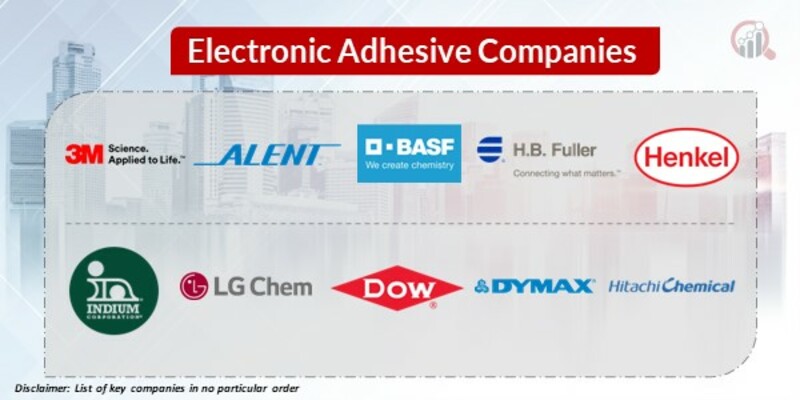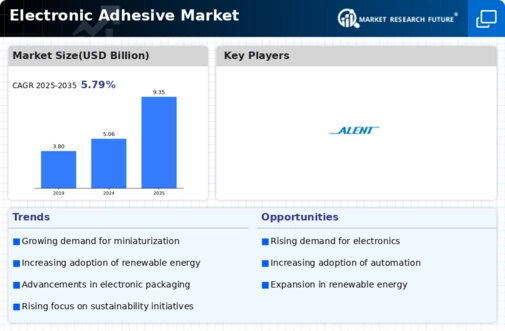Top Industry Leaders in the Electronic Adhesives Market

The electronic adhesive market is a crucial cog in the ever-evolving machinery of the electronics industry. These specialized glues not only hold delicate components together but also manage heat, conduct electricity, and protect against environmental hazards. With the miniaturization and diversification of electronics, the demand for efficient and innovative adhesives is only bound to escalate. Let's delve into the competitive landscape of this dynamic market, analyzing strategies, key players, and recent developments.
Strategies for Sticky Success:
-
R&D Frenzy: Leading players like 3M, Henkel, and Dow are pouring resources into developing novel adhesives with superior conductivity, thermal management, and durability. Recent examples include Henkel's Loctite Glass to Metal adhesives for wearables and 3M's thermally conductive, pressure-sensitive tapes for automotive electronics. -
Specialization is Key: Market differentiation is crucial. Companies like Ellsworth Adhesives focus on niche applications like high-temperature bonding in aerospace electronics, while Avery Dennison targets specific sectors like consumer electronics with its pressure-sensitive adhesive films. -
Sustainability Sells: Eco-conscious adhesives with reduced VOCs and bio-based ingredients are gaining traction. H.B. Fuller's bio-based epoxy for LED modules and Dow's TEROSPACE™ RESIN 4700, derived from plant oils, exemplify this trend. -
Partnerships and Acquisitions: Strategic collaborations and acquisitions are accelerating market consolidation and knowledge sharing. BASF's acquisition of assets from Henkel's electronic materials business in 2022 is a recent example.
Factors Stickying Market Share:
-
Application Diversification: The rise of wearable electronics, IoT devices, and electric vehicles is creating new adhesive niches, pushing suppliers to cater to diverse requirements. -
Regional Dynamics: Asia-Pacific, driven by booming electronics manufacturing, accounts for the largest share, followed by Europe and North America. Emerging economies like India and China are attracting major players looking for new growth avenues. -
Technological Advancements: Miniaturization and 3D printing necessitate specialized adhesives with unique properties like dispensability and flexibility. Companies are actively developing solutions for these emerging applications. -
Sustainability Regulations: Stringent environmental regulations are pushing manufacturers towards eco-friendly adhesives, posing both challenges and opportunities for innovative companies.
List of the Key Companies in the Electronic Adhesive market include
- 3M Company
- Alent PLC
- BASF SE
- B. Fuller Company
- Henkel AG & Co. KGaA
- Indium Corporation
- LG Chemical Limited
- The Dow Chemicals Company
- Dymax Corporation
- Hitachi Chemical Co
Recent News:
On 15th February 2021, Amazon India announced Amazon Electronic Device Manufacturing India, which might raise demand for electronic adhesives in the country.
By 2025, India's electronic market is expected to reach USD400 billion. Moreover, it is projected that by 2025, India will be the fifth biggest consumer electronics and appliances industry worldwide.
In addition to that, technology transitions like deploying LTE/4G networks and IoT (Internet of Things) are pushing for the adoption of electronic products in India.
More research on high-performance adhesives used for mounting miniaturized devices in the electric/electronics sector is seen to support such a market during the forecast period.
Increased demand for wearable devices drives the growth of the electronic adhesives market, where the key factor lies here. Wearable gadgets have gained immense popularity over recent years because they combine technology with everyday accessories, enabling users to enjoy ease, connection as well as improved features.









